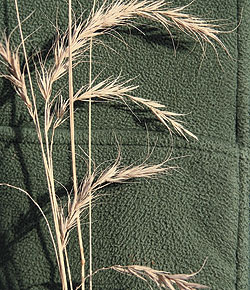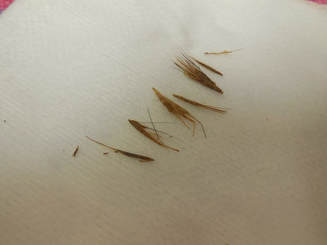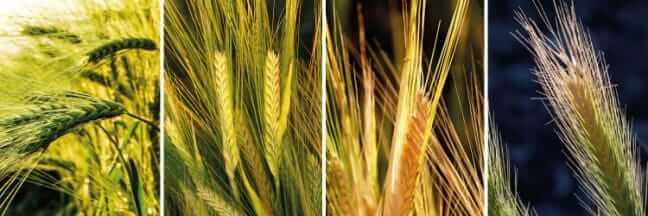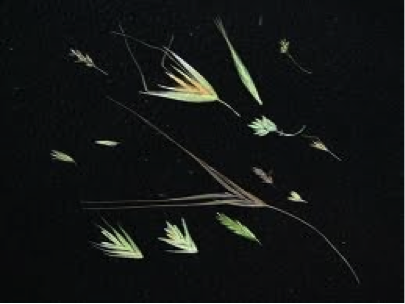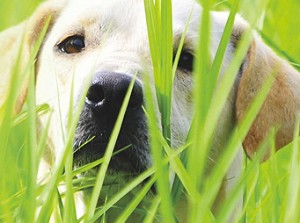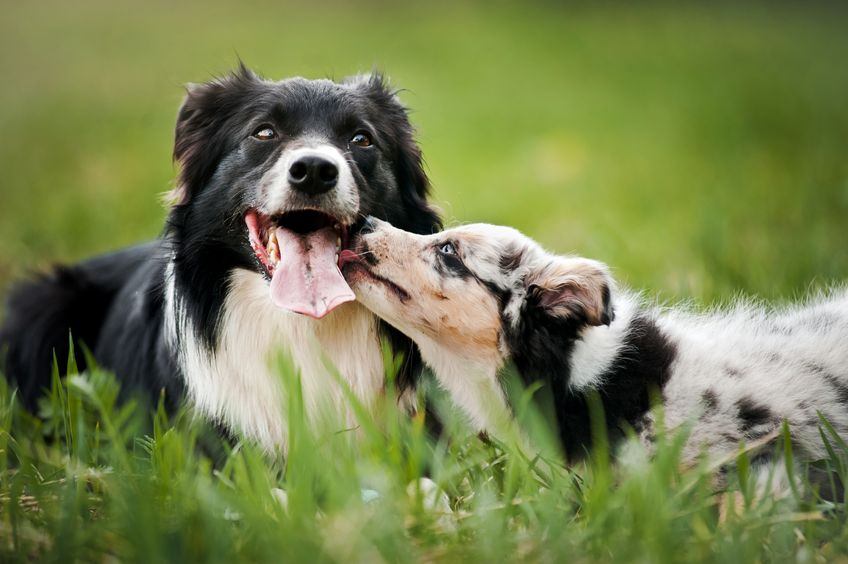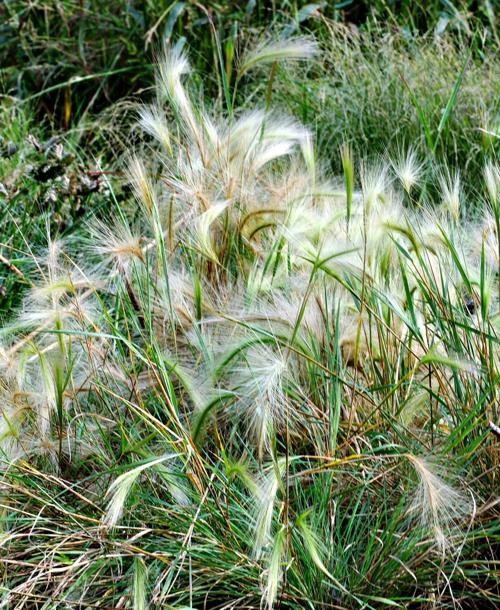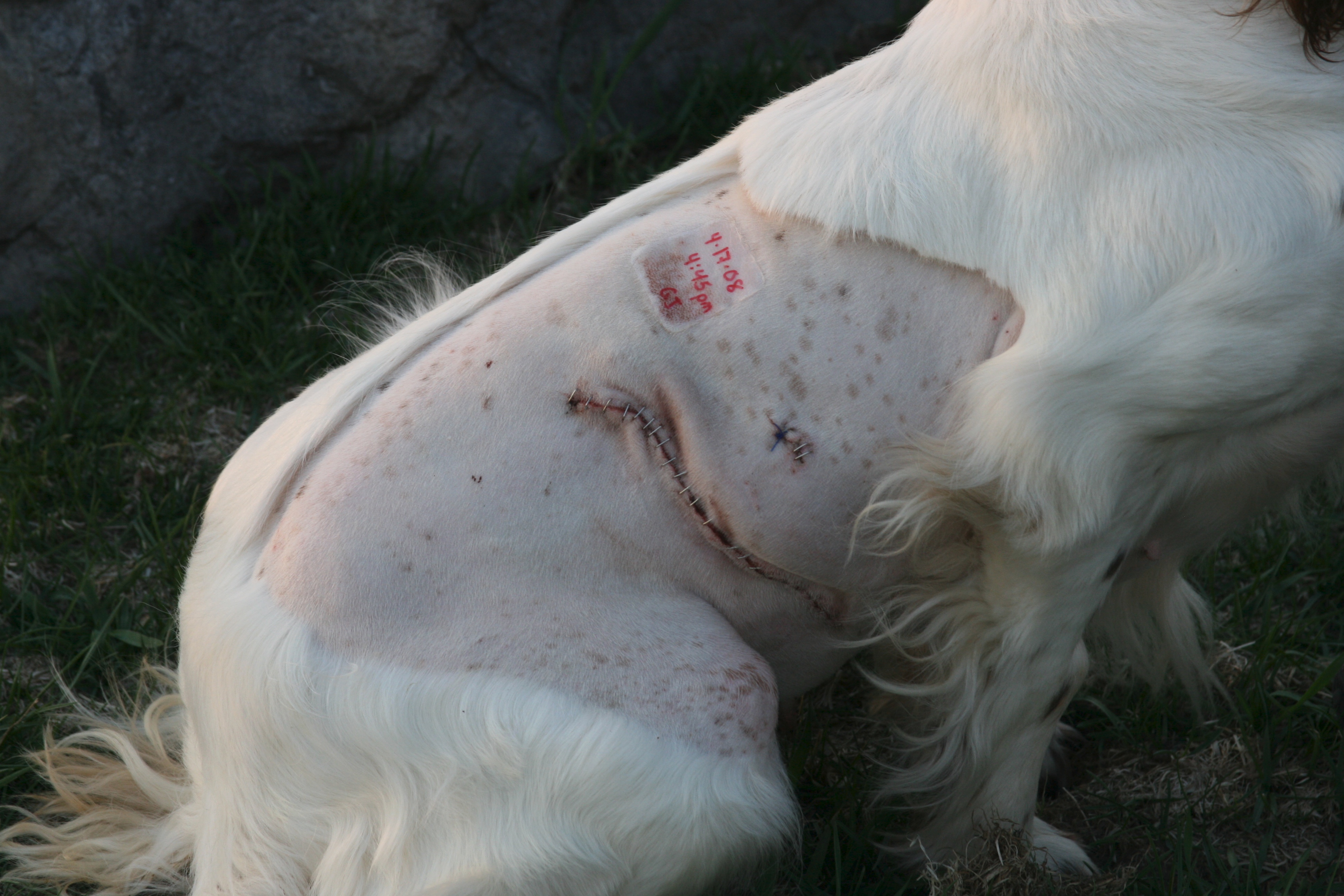Scary stuff and with upland bird hunting seasons in many states set to kick off in the next few weeks now is a good time to remind all dog owners about the very real dangers of grass awn infections.
Grass awn infection.
These seeds or grass awns can become lodged in pet ears between toes and under the skin.
The foxtail barley is emerging and it s easy to spot in the roadside medians right now as.
However grass awns can also cause much more serious health problems when they enter through the mouth or nose of a dog and migrate through the respiratory or gastrointestinal tract.
Sporting dogs are most at risk for this as the upland bird habitat is nearly always dominated by grass.
Based on my experience and the case histories i am gathering many infections show up as an acute illness.
After a while the problem might result in nasal drainage or infection.
Actinomycosis and nocariosis are infections caused by the injection inhalation or entry through the skin of grass awns that over time develop into serious difficult to diagnose infections in the dog.
All are grasses that are most prevalent in late spring and early summer.
Common names for these weeds range from speargrass to foxtail.
If a dog has an awn stuck in its nasal cavity sneezing is usually among the first symptoms says dr.
What are the symptoms of grass awn infection.
June 15 2011 by the grass awn project leave a comment.
We ve had a cold spring in southern wi so plants may be behind schedule here.
Many pastures and yards have these plants.
After a while the problem might result in nasal drainage or infection.
If a dog has an awn stuck in its nasal cavity sneezing is usually among the first symptoms says dr.
Most of the time the seeds.
One of the most common minor emergencies we see during the summer in the mid southare grass awn foreign bodies.
Some dogs die of infection before the cause of the problem is identified.
Grady has had multiple incidents of grass awn infection with treatment read full article.
Signs of foxtail or cheatgrass problems in dogs lethargy loss of appetite swelling or lump puncture hole discharge or bleeding licking chewing or pawing at the affected area limping if legs paws affected shaking head if ears affected.
Surgery may be required to remove the grass awn and the resulting abscess.
Pyothorax an infection in the chest cavity pneumonia and or body wall or internal abscesses.
A dog might also excessively rub its nose.
Avoid an infection from a grass awn.
Well there are two.
The simplest and the one that requires no technical knowledge is to thoroughly brush and comb your dog every time you get back home from being out of doors in a place with un mowed grass vegetation.

